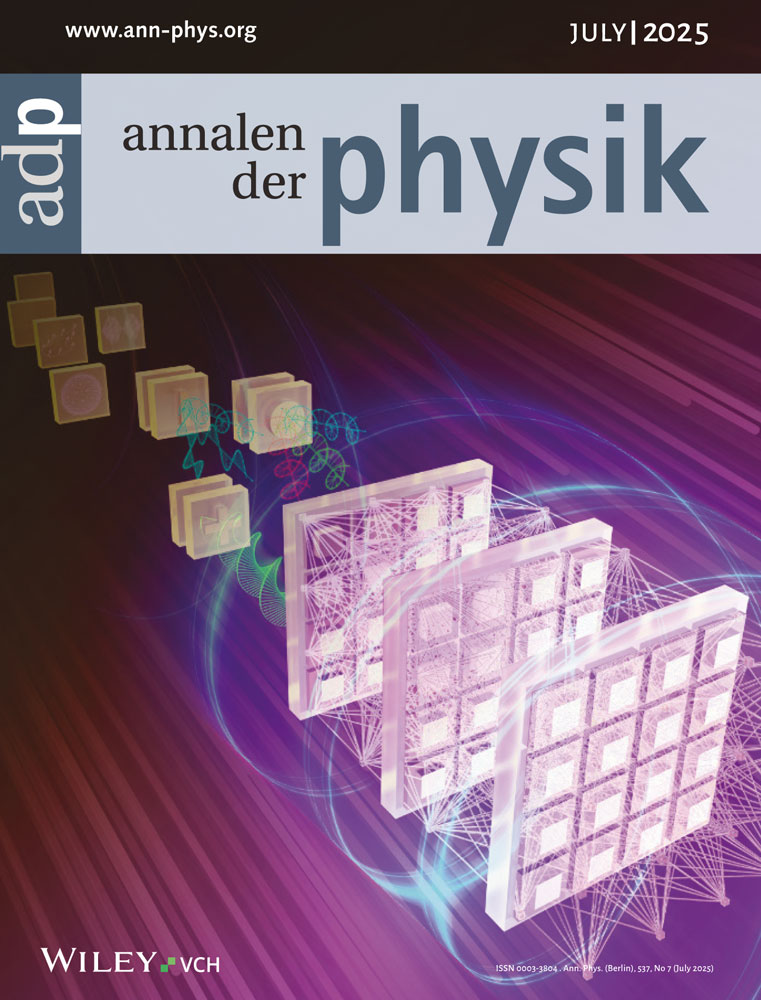Quantum Statistics of the Toda Oscillator in the Wigner Function Formalism†
Prof. H.-J. Treder zurn 60. Geburtstag gewidmet
Abstract
enClassical and quantum mechanical Toda systems (Toda molecules, Toda lattices, Toda quantum fields) recently found growing interest as nonlinear systems showing solitons and chaos. In this paper the statistical thermodynamics of a system of quantum mechanical Toda oscillators characterized by a potential energy V(q) = Vo cos h q is treated within the Wigner function formalism (phase space formalism of quantum statistics). The partition function is given as a Wigner- Kirkwood series expansion in terms of powers of h2 (semiclassical expansion). The partition function and all thermodynamic functions are written, with considerable exactness, as simple closed expressions containing only the modified Hankel functions Ko and K1 of the purely imaginary argument iζ with ζ = Vo/kT.
Abstract
deQuantenstatistik des Toda-Oszillators im Formalismus der Wigner-Funktion
Klassische und quantenmechanische Toda-Systeme (Toda-Moleküle, Toda-Gitter, Toda-Quantenfelder) haben als nichtlineare Systeme mit Solitonen und Chaos in jüngster Zeit zunehmend an Interesse gewonnen. Wir untersuchen die statistische Thermodynamik eines Systems quantenmechanischer Toda-Oszillatoren, die durch eine potentielle Energie der Form V(q) = Vo cos h q charakterisiert sind, im Formalismus der Wigner-Funktion (Phasenraum-Formalismus der Quantenstatistik). Die Zustandssumme wird als Wigner-Kirkwood-Reihe nach Potenzen von h2 (semiklassische Entwicklung) dargestellt, und aus ihr werden die thermodynamischen Funktionen berechnet. Sämtliche Funktionen sind durch einfache geschlossene Formeln allein mit den modifizierten Hankel-Funktionen Ko und K1 des rein imaginären Arguments i mit ζ = Vo/kT mit großer Genauigkeit darzustellen.




